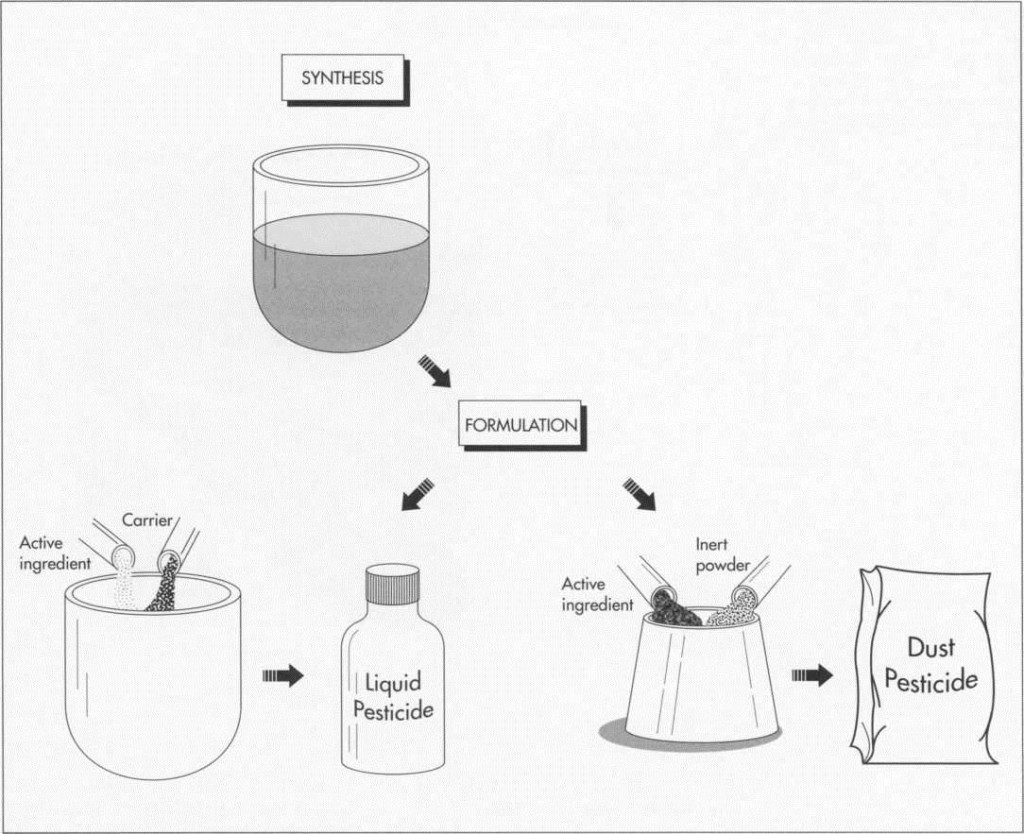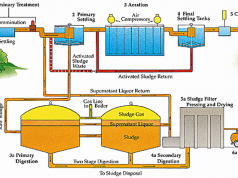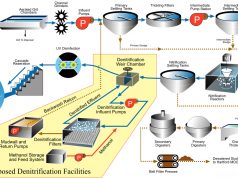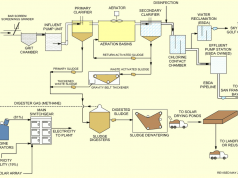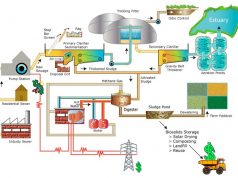
Background
The word “pesticide” is a broad term that refers to any device, method, or chemical that kills plants or animals that compete for humanity’s food supply or are otherwise undesirable. Pesticides include insecticides, fungicides, herbicides, nematocides (used to kill nematodes, elongated cylindrical worms), and rodenticides. Of these various pesticides, insecticides have a longer and more noteworthy history, perhaps because the number of insects labeled “pests” greatly exceeds the number of all other plant and animal “pests” combined. Hence, this article focuses on the use of agricultural insecticides.
Since they first began cultivating crops (around 7000 B.C.) if not before, humans have devised methods to prevent insects from eating or otherwise destroying precious crops. Some cultures relied on the practice of planting during certain phases of the moon. Other early agricultural practices that indirectly kept insect populations low were rotating crops; planting small, varied crops; and selecting naturally resistant plants. People picked bugs off plants by hand and made noise to ward off grasshoppers. Chemicals were also used early on. The crushed petals of the pyrethrum (a type of chrysanthemum), sulfur, and arsenic were used in the Middle East, Rome, and China, respectively. The Chinese also used natural predators such as ants to eat undesirable insects.
All attempts at pest control were pretty much individual affairs until the 1840s, when a North American fungus called powdery mildew invaded Britain, and the epidemic was controlled with large-scale applications of sulfur. The Colorado beetle in the western
United States was the next target: by 1877 western settlers had learned to protect their potato crop by using water-insoluble chemicals such as paris green. Other pesticides such as derria, quassia, and tar oil followed, but nineteenth-century pesticides were weak. They had to be supplemented by introducing natural predators, or, in some cases, by grafting threatened plants onto more resistant rootstock.
By World War II, only about 30 pesticides existed. Research during the war yielded DDT (dichloro-diphenyl-trichloro-ethane), which had been synthesized in 1874 but wasn’t recognized as an insecticide until 1942. Other strong pesticides soon followed, such as chlordane in 1945 and endrin in 1951. Poison gas research in Germany yielded the organophosphorus compounds, the best known of which is parathion. These new pesticides were very strong. Further research yielded hundreds of organophosphorus compounds, the most noteworthy being malathion, which was recently used in California against the medfly.
Until the 1800s, when people began to spray personal gardens using fairly large machines, pesticides were generally applied by hand. Airplanes were not used until the 1920s, and slow, well-controlled, low-level flights were not implemented until the 1950s. The first aerial spraying of synthetic pesticides used large amounts of inert materials, 4000 liters per hectare (a hectare equals 2.47 acres). This quantity was rapidly reduced to 100 to 200 liters/hectare, and by the 1970s the amount had been reduced (in some cases) to .3 liters per hectare of the ingredient itself (for example, malathion) applied directly to the fields. Today, some 900 active chemical pesticides are used to manufacture 40,000 commercial preparations. The Environmental Protection Agency (EPA) estimates that the use of pesticides doubled between 1960 and 1980. Currently, over 372 million kilograms a year are used in the United States, with over 1.8 billion kilograms a year used worldwide.
(ln pesticide manufacturing, an active ingredient is first synthesized in a chemical factory. Next, a formulator mixes the active ingredient with a carrier (for liquid pesticide) or with inert powders or dry fertilizers (for dust pesticide), then bottles or packages it. Liquid pesticides are packaged in 200-liter drums for large-scale operations or 20-liter jugs for small-scale operations, while dry formulations can be packaged in 5 to 10 kilogram plastic or plastic-lined bags)
Raw Materials
A pesticide consists of an active ingredient coupled with inert ingredients. The active ingredient kills the pests, while the inert ingredients facilitate spraying and coating the target plant; they can also contribute other advantages that are not conferred by the active ingredient alone.
Active ingredients were once distilled from natural substances; now they are largely synthesized in a laboratory. Almost all are hydrocarbons derived from petroleum. Most pesticides contain other elements, the type and number of which depend on the pesticide desired. Chlorine, oxygen, sulfur, phosphorus, nitrogen, and bromine are most common. Inert ingredients can be many substances, dependent on the type of pesticide. Liquid pesticides have traditionally used kerosene or some other petroleum distillate as a carrier, though water has recently begun to replace kerosene. Emulsifiers (such as soap) are also added to distribute the active ingredient evenly throughout the solvent. A powder or dust pesticide will typically contain vegetable matter such as ground up nut shells or com cobs, clays such as diatomite or attapulgite, or powdered minerals such as talc or calcium carbonate as a base. To cause the pesticide to adhere better to the plant or soil, a material such as cornstarch or flour may be added.
The Manufacturing Process
Manufacturing a pesticide involves at least three separate activities. The active ingredient is first synthesized in a chemical factory, then formulated in the same place or sent to a formulator, who prepares the liquid or powder form. The pesticide is then sent to the farmer or other certified applicator, who dilutes it before applying it to the fields.
Synthesizing the pesticide
1 When a new pesticide is first developed, it is manufactured on a small scale in a laboratory. If the substance proves viable, production begins in the factory. Batch or continuous manufacturing insures a high volume, perhaps as much as 500 kilograms percycle. Synthesizing a pesticide is a complex chemical procedure that requires trained chemists and a large, sophisticated laboratory. The basic procedure entails altering an organic molecule to form a pesticide. This may involve any of a number of specific ‘reagents and catalysts and often must take place in a controlled climate (within a certain temperature range, for example). Once synthesized, the active ingredient is packaged and sent to a formulator. Liquid insecticides can be shipped in tank trucks or 200-liter drums. Transport of the active ingredient follows all regulations for hazardous materials transportation
Formulating the pesticide
2 A formulator accepts the active ingredient, measures out the proper amount, mixes it with carrier if it is to be a liquid pesticide or with inert powders or dry fertilizers if it is to be a dust pesticide, then bottles or packages it. Liquid pesticides are packaged in 200-liter drums if a large-scale farmer is the anticipated customer or 20-liter jugs for small-scale operations. Dry formulations can be packaged in 5 to 10 kilogram plastic or plastic-lined bags. An emulsified formulation is usually concentrated to render transport easier (the active ingredient typically makes up 50 percent of the emulsified concentrate), but granulated and dry pesticides are ready to use.
Diluting the pesticide
3 The pesticide might be stored a short time before it is requested. When it is ready for transport, the estimated necessary amount is sent to the farmer, who dilutes the emulsified concentrate to create the amount of pesticide desired. In most instances, the final product consists of only .5 to 1 percent of the original active ingredient. The pesticide is now ready to be applied.
Applying the pesticide
4 There are several ways to apply a pesticide. The method with which Americans are most familiar is crop dusting, though its use is generally limited to large, flat areas. A plane loaded with 2000-liter (or larger) tanks flies over a field and sprays out the pesticide from booms. Booms are long, horizontal rods from which several sprinklers spray down. Another method is to attach the tanks and booms to a tractor and spray closer to the ground. For small farmers, the most economical method of spraying is to use one or more workers with hand-held sprayers attached to small tanks. A hand pump can be carried on the shoulder; its tank capacity is only about 3 to 12 liters. Small tanks with a capacity of around 200 liters are also used. The pesticides are applied with a hand gun. A rough estimate of the amount applied is 150 to 300 liters per hectare.
Quality Control
Pesticides are by their very nature toxic sub-stances; hence, a great deal of concern has centered on safety. The laws dealing with pesticide safety are very strict and will become even stricter in the future. Besides legal restrictions, pesticides are also subject to stringent quality control standards like any other manufactured product.
Most large pesticide manufacturers have highly developed quality control laboratories that test each pesticide for potency, émulsification, density, color, pH, particle size (if a dust), and suspension (if a liquid). If the company makes more than one pesticide, the product’s identity must also be verified. A pesticide must be stable, easy to apply, and easy to store. Shelf-life must extend past one year. In accelerated tests, the pesticide is subjected to high temperatures for a short period, then checked for effectiveness. A typical pesticide is 95 percent pure. Labels must be easy to read and meet all regulations. The manufacturer keeps files for each raw mateial, active ingredient, formulation, and packaged item, and samples are stored for three years.
Today’s pesticides, when used properly, are very safe. Farmers who apply their own pesticides must be trained by the U.S. Agricultural Extension Service and certified by the state department of agriculture before they can purchase pesticides. Commercial applicators must also undergo training and pass a written test.
When preparing a formulation for application, which in most cases means diluting it, the applicator should wear protective clothing as directed by the label. Often, this protective garb includes an apron or coveralls, a broad-brimmed hat, long-sleeved shirt, long socks, unlined neoprene or rubber gloves, long pants, and unlined neoprene or rubber boots worn over shoes. For some pesticides, applicators must also wear goggles and/or a respirator.
As an additional precaution, application equipment is calibrated before each use. To calibrate a sprayer, the applicator measures off a distance in the field, then sprays it with a neutral substance such as water. The amount of water used is then checked to see if it is appropriate. All equipment is also checked to see if spraying is even, and worn equipment is replaced promptly.
Byproducts/Waste
When they were introduced, pesticides were seen as a wonderful technology that would increase crop yields and reduce insect-borne diseases. The first sign that this was a hopeful myth was the discovery in the 1950s that pesticide volume must be increased to have the same effect it once had. With the publication of Silent Spring by Rachel Carson in 1962, an awareness of the danger of unrestricted pesticide use grew.
Pesticides kill the pests they are aiming for most of the time, yet often they also kill the pests’ natural predators, thereby exacerbating the problem. In some cases, exterminating a pest merely allows another pest to take its place. After a period of pesticide use, the insects become resistant to the pesticide, and stronger or more pesticides must be used to control the population. There is evidence that pesticides are misused, that their effect in some cases is negligible, and that applicators are not aware of the proper use of pesticides. Coupled with these concerns is the worry over blanket spraying of residential areas and contaminated food.
DDT is the most widely noted case of a pesticide that caused damage far from the farm. High levels of DDT have been found in birds of prey, causing them to become endangered because of the effect it has on their eggs. DDT becomes more concentrated the higher it climbs in the food chain, and many people have voiced their concern about its possible presence in humans. In 1972, the Environmental Protection Agency (EPA) announced a ban on almost all uses of DDT.
Several dozen other pesticides have also been banned, or their use restricted by the EPA. Ironically, these pesticides are still being exported to assist developing countries, where it is estimated that three million acute cases of pesticide poisoning occur per year, along with 20,000 deaths directly related to the misuse of pesticides. Because many of these countries export produce to the United States, the possibility of American contamination is high.
Integrated pest management (IPM) was begun in the 1960s in response to the pesticides dilemma. The idea behind IPM was to use a variety of insect controls instead of relying solely on chemical insecticides. The methods include introducing natural predators, parasites, and bacterial, viral, and fungal insecticides to the fields. Workers may simply vacuum up the insects, or introduce certain plants to ward off pests that attack a particular crop. Farmers may plow at the most effective time, plow their crop residue under, or strip harvest. They may plant pest-resistant plants. Sexual attractant traps may pull pests away from crops. Sterilized males can be released into the field. Insects can be engineered to remain juvenile and never reproduce, molt too rapidly and therefore die rapidly, or become too confused to locate crop foods. Other possibilities are being tested at present. It is possible that in the future pesticide use will diminish as research leads to ways to combat pests with more knowledge and planning and less reliance on chemical intervention.
Where To Learn More
Books
Carson, Rachel. Silent Spring. Houghton Mifflin Company, 1962.
Lee, Sally. Pesticides. Franklin Watts,1991.
Ware, George W. Pesticides: Theory and Application. W.H. Freeman, 1983.
Periodicals
Gibbons, Ann. “Overkilling the Insect Enemy.” Science. August 10, 1990, p. 621.
Holmes, Bob. “The Joy Ride Is Over.” U.S. News and World Report. September 14,1992, pp. 73-74.
Reganold, John P., Robert I. Papendick, and James F. Parr. “Sustainable Agriculture.” Scientific American. June, 1990, pp. 112¬120.
Richmond, Suzan. “Making Sure It’s Organic.” Changing Times. October, 1990, p. 102.
Satchell, Michael. “A Vicious ‘Circle of Poison.’” U.S. News and World Report. June 10, 1991, pp. 31-32.

